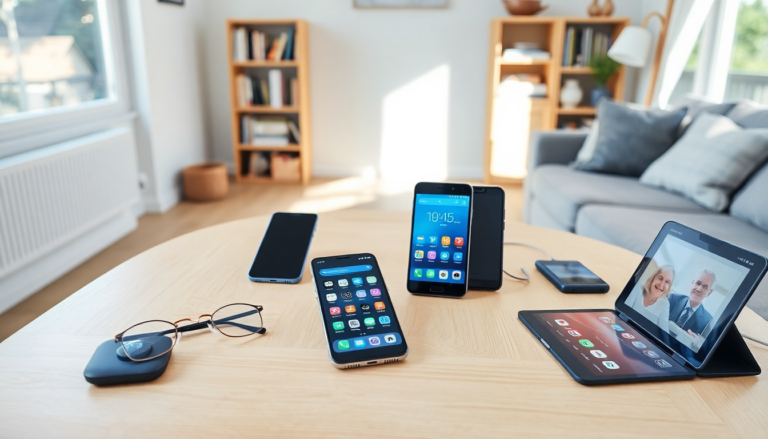Argomenti trattati
As technology continues to advance, smartphones have become essential tools in our daily lives, offering features that cater to a wide range of user needs—including those of seniors. With the right device, older adults can tap into the myriad benefits of modern communication, entertainment, and access to vital services. In this guide, we’ll explore some of the best smartphones for seniors, spotlighting their standout features, price points, and what makes them appealing in today’s tech landscape.
Understanding the Best Smartphone Options for Seniors
When it comes to choosing a smartphone for seniors, it’s crucial to consider their unique requirements. Ease of use, accessibility features, and safety functions are at the top of the list. Thankfully, several devices have been specifically designed with these factors in mind, making them ideal companions for older adults. For example, the Jitterbug Smart4 offers a simplified menu and dedicated safety buttons, while the iPhone series boasts comprehensive accessibility features that enhance usability.
In evaluating smartphones for seniors, key criteria include the intuitiveness of the interface, the availability of voice commands, the quality of customer support from service providers, and affordability. These elements ensure that seniors can connect effortlessly with family and friends while accessing essential services without any hassle.
Comparing Key Smartphone Models
The Jitterbug Smart4, priced at around $119.99, is built with seniors in mind. It combines essential smartphone functions with crucial safety features, including an emergency response button, making it a solid choice for those who prioritize security. Its user-friendly interface features a list-based menu, simplifying navigation for those who might not be as tech-savvy.
On the flip side, the iPhone 16, priced at approximately $829, shines with its robust accessibility features. Seniors can easily magnify text or use VoiceOver for audio descriptions, making it a great option for those with visual impairments. Plus, with Siri, Apple’s voice assistant, seniors can operate their phones hands-free, making tasks like checking the weather or sending messages a breeze.
If photography is more your style, the Samsung Galaxy S24 should be on your radar. With a remarkable 50 MP camera that performs well in various lighting conditions, this phone starts at just $199.99 and offers exceptional image quality along with advanced AI editing capabilities. It’s perfect for seniors who want to capture and share memories without the need for complex editing software.
Evaluating Pricing and Service Plans
Understanding the service plans that come with a smartphone is essential, especially for seniors. Budget-friendly options abound, such as Consumer Cellular, which offers plans ranging from $20 to $50 per month. These plans typically include unlimited talk and text along with data options, allowing seniors to choose a plan that fits their needs without breaking the bank.
Another provider, Lively, caters specifically to seniors by offering plans that include dedicated support for emergency situations. Their pricing structure is straightforward, with various options depending on the level of service required. This accessibility is crucial for older adults who may need immediate assistance or guidance in navigating their devices.
Ultimately, selecting a smartphone should be a personalized decision that aligns with the user’s individual needs, ensuring they can enjoy modern technology without feeling overwhelmed. A tailored approach—balancing features with affordability—will enhance their experience and boost their confidence in communicating and accessing information.
Looking Ahead: Future Smartphone Trends for Seniors
As smartphone technology evolves, we can expect to see more innovations tailored to senior users. Future devices may come equipped with even more intuitive interfaces, enhanced voice command capabilities, and improved safety features like fall detection and emergency alerts.
Additionally, the integration of health monitoring applications is likely to become a standard feature, enabling seniors to track vital signs and connect seamlessly with healthcare providers. This trend towards personalization and health awareness reflects broader societal shifts towards proactive health management for older adults.
In conclusion, choosing the best smartphone for seniors involves finding the right balance between functionality, safety, and user-friendliness. With the right device, seniors can confidently embrace technology, improving their communication and overall quality of life.

